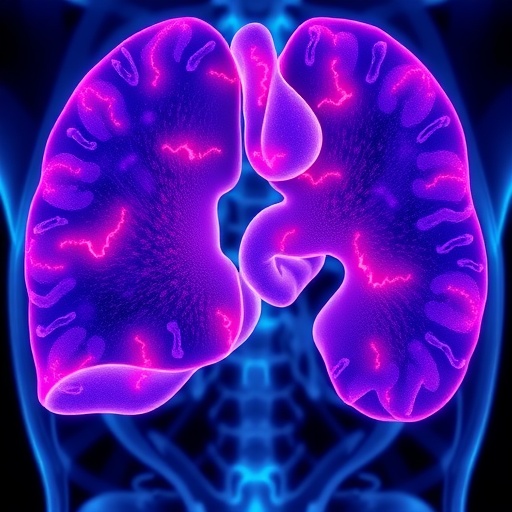PHILADELPHIA – The longer a patient with a positive screening result waits for diagnostic testing, the worse their cancer outcomes may become, according to a literature review of breast, cervical, colorectal, and lung studies in the journal CA led by researchers at the Perelman School of Medicine at the University of Pennsylvania.
After a patient receives a positive cancer screening result, the next recommended step is a follow-up evaluation with diagnostic testing, a CT scan for example, which is key to confirm the absence or presence of cancer(s) and the severity of any that may be present.
The authors, an interdisciplinary team of cancer experts from the Population-Based Research Optimizing Screening Through Personalized Regimens Consortium, urge patients who receive a positive screening to schedule a diagnostic test as soon as feasible. Articles considered were published between January 1998 and December 2017, conducted in an average-risk population, except in lung cancer, and used study designs that provided empirical evidence and evaluated the key question.
Although the findings of this research follow the longstanding conventional wisdom, this literature review backs up this message with patient outcome data. The authors make clear that each patient's cancer trajectory is different and there is no established timeframe that is OK to wait before a diagnostic test without risk of cancer progression.
"To ignore these findings is not patient-centered," said lead author Chyke Doubeni, MD, chair of Family Medicine and Community Health. "The longer a patient waits, the less likely they are to get the diagnostic testing done. There is also the risk that precancerous or early tumors will become more advanced cancers that are more difficult or impossible to cure."
The paper offers suggested targets for each of the four cancers within which diagnostic testing should be performed. The targets range from 60-90 days, but were not able to ascribe a certain number of risk points based on exactly how long a patient waits. For example, on average, cervical cancer takes longer to progress than lung cancer does, but the authors caution against ascribing a safe period to wait or saying it's safe to wait a little longer if you have cervical cancer vs another type based on the limited body of knowledge to date.
The National Academy of Medicine has identified improving the timeliness and patient-centeredness of care as an important unmet health priority. Screening is proven to reduce the risk of death from some cancers and is currently recommended at grade A or B by the US Preventive Services Task Force in eligible persons for breast, cervical, colorectal, and lung cancers, which enables full coverage of those services under the Affordable Care Act.
Future research will aim to identify the appropriate data to identify time intervals during which it is potentially safe to wait before undergoing diagnostic testing.
Doubeni and his colleagues note that prompt diagnostic testing may also reduce mortality risk, and may also reduce worries about uncertainty about the procedure. Additionally, sooner is better, as provider or system delays in follow-up may increase the likelihood that diagnostic testing may not occur at all, such as changes in patient contact information or insurance coverage changes.
Based on the few direct studies cited, overall, there is evidence that if you wait longer than 60-90 days, generally cancer will progress. This is not surprising biologically, but the paper provides guidance on how to set metrics to measure improvement. Next steps for the research will seek out the most effective interventions to reduce the time to diagnosis for vulnerable and minority populations, and any patients who have barriers to timely follow up.
###
In addition to Doubeni and authors from other institutions, Penn co-authors on the research include Nicole B. Gabler, Mitchell D. Schnall, Anil Vachani, Shivan J. Mehta, and Katharine A. Rendle.
Penn Medicine is one of the world's leading academic medical centers, dedicated to the related missions of medical education, biomedical research, and excellence in patient care. Penn Medicine consists of the Raymond and Ruth Perelman School of Medicine at the University of Pennsylvania (founded in 1765 as the nation's first medical school) and the University of Pennsylvania Health System, which together form a $7.8 billion enterprise.
The Perelman School of Medicine has been ranked among the top medical schools in the United States for more than 20 years, according to U.S. News & World Report's survey of research-oriented medical schools. The School is consistently among the nation's top recipients of funding from the National Institutes of Health, with $405 million awarded in the 2017 fiscal year.
The University of Pennsylvania Health System's patient care facilities include: The Hospital of the University of Pennsylvania and Penn Presbyterian Medical Center — which are recognized as one of the nation's top "Honor Roll" hospitals by U.S. News & World Report — Chester County Hospital; Lancaster General Health; Penn Medicine Princeton Health; Penn Wissahickon Hospice; and Pennsylvania Hospital – the nation's first hospital, founded in 1751. Additional affiliated inpatient care facilities and services throughout the Philadelphia region include Good Shepherd Penn Partners, a partnership between Good Shepherd Rehabilitation Network and Penn Medicine, and Princeton House Behavioral Health, a leading provider of highly skilled and compassionate behavioral healthcare.
Penn Medicine is committed to improving lives and health through a variety of community-based programs and activities. In fiscal year 2017, Penn Medicine provided $500 million to benefit our community.
Media Contact
Greg Richter
[email protected]
215-614-1937
@PennMedNews
http://www.uphs.upenn.edu/news/
https://www.pennmedicine.org/news/news-releases/2018/april/cancer-risk-rises-as-patients-wait-for-diagnostic-testing
Related Journal Article
http://dx.doi.org/10.3322/caac.21452




